
Amidst all the wonders of our solar system — and as we know now, other solar systems — it may be all too easy to overlook the asteroids. But each asteroid is a whole world unto itself. And because there are more than a million known asteroids, our universe's wonders and mysteries exist in great abundance.
Indeed, asteroids brought some of this year's most fascinating astronomy stories. From asteroids with strange materials and missions returning pieces of distant rocks to Earth all the way to traces of RNA getting found in asteroid bits from the dawn of the solar system, here are 12 ways asteroids fascinated us in 2023.
1. Asteroid Phaethon's mysterious tail
Phaethon has a particularly odd orbit for an asteroid. At its farthest, it drifts as far from the sun as Jupiter does; at its nearest, it comes closer to the sun than any other known asteroid. It also flourishes a spectacular tail. It was the tail that raised a dilemma. If it were made from ice and carbon dioxide, a tail like this should still be visible at the most distant point in its orbit. Well, it isn’t.
To investigate further, astronomers compared infrared observations of Phaethon from NASA's Spitzer Space Telescope to the results of laboratory tests. When they did so, they found evidence of olivine, carbonates, iron sulfides and oxide minerals. This mineral palette marks Phaethon as a rare type of asteroid known as a "CY carbonaceous chondrite." As the asteroid approaches the sun, its interior heats up, and scientists realized those minerals release carbon dioxide, water vapor and sulfur gas, forming the tail.
"It was great to see how each one of the discovered minerals seemed to fall into place and also explain the behavior of the asteroid," Mikael Granvik, an astronomer from the University of Helsinki, said in a statement.
Read more here: Asteroid Phaethon's mysterious tail may finally have an explanation
2. A historic 4-billion-mile journey to Bennu
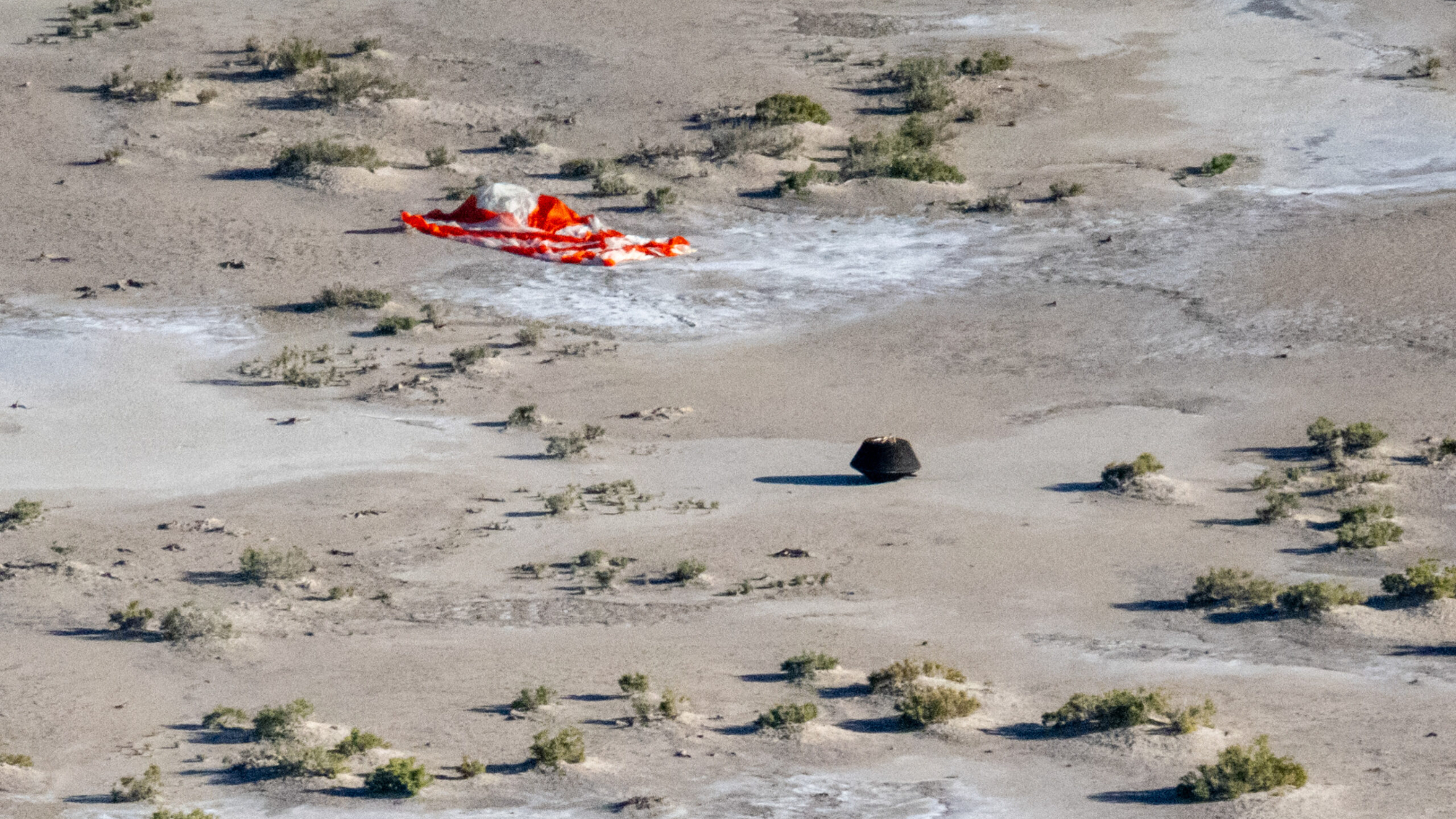
On Sept. 8, 2016, OSIRIS-REx lifted off from Earth. 7 years and 4 billion miles later, the mission returned to Earth with a special delivery of samples from its destination: Asteroid Bennu.
OSIRIS-REx’s planners chose Bennu as the mission’s target because the asteroid was believed to contain a relatively large amount of carbon-based material. OSIRIS-REx’s delivery — likely adding up to about 250 grams (8.8 ounces) of Bennu’s dust and broken rock, packaged in a capsule that the mission parachuted into the Utah desert from 63,000 miles (101,000 km) away — will help scientists study whether asteroids like Bennu once helped bring water and organic material to Earth.
OSIRIS-REx’s mission is very far from over. After visiting Earth, the spacecraft departed yet again. In 2029, the spacecraft will arrive at its next destination: The near-Earth asteroid Apophis.
Read more here: NASA's OSIRIS-REx lands samples of asteroid Bennu to Earth after historic 4-billion-mile journey
3. A strange 'Dinky' moon

Over the course of its mission, NASA's Lucy spacecraft is scheduled to encounter 10 different asteroids. The spacecraft passed the first item on its itinerary, the asteroid Dinkinesh, in early November. And as it did so, astronomers discovered Dinkinesh is actually a binary. Orbiting the main asteroid is a much smaller companion.
The picture became even more complex when astronomers realized Dinkinesh's "moon" is actually a contact binary: two objects touching each other. That makes Dinkinesh a ternary.
"I would have never expected a system that looks like this. In particular, I don't understand why the two components of the satellite have similar sizes. This is going to be fun for the scientific community to figure out,” the Southwest Research Institute's Hal Levison, Lucy’s principal investigator, said in a statement.
Dinkinesh is a minor stop on Lucy’s route to its real destination: The Trojans, which are a bunch of asteroids that share Jupiter's orbit around the sun.
Read more here: Strange moon of asteroid Dinkinesh is weirder than thought after NASA probe finds 'contact binary’
4. Hubble observes the incredible DART asteroid impact

In September 2022, NASA’s Double Asteroid Reduction Test (DART) crashed into the asteroid Dimorphos, successfully nudging the near-Earth space rock into a different orbit. 10 months later, NASA announced the Hubble Space Telescope had observed Dimorphos and spotted a swarm of loose boulders floating about the asteroid.
NASA suggested two ways the boulders might have formed. DART's collision might have sprouted a fountain of ejecta that threw rocks away from Dimorphos's surface. Or, alternatively, DART's impact might have spawned a seismic wave that sheared rocks off.
In the months since DART's impact, scientists have studied Dimorphos in hopes of understanding what the impact actually did to the asteroid. Hubble's image "tells us for the first time what happens when you hit an asteroid and see material coming out up to the largest sizes," David Jewitt, a planetary scientist at the University of California at Los Angeles, said in a statement.
Read more here: Hubble telescope spies cloud of space rocks created by DART asteroid impact
5. AI algorithms spur a 1st for astronomy
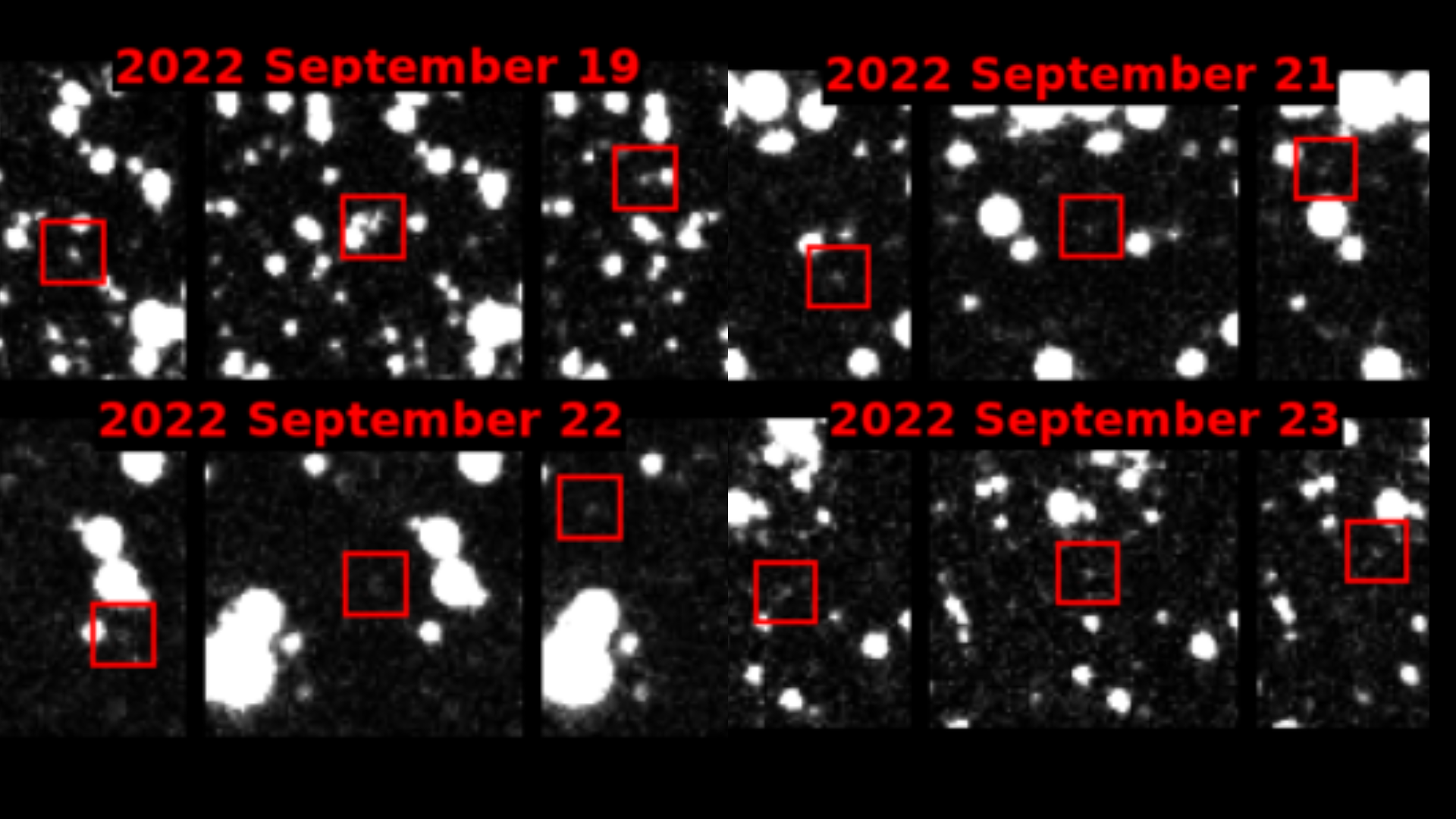
Tinier asteroids are often hard to spot in the night sky. For the human eye, that is. Enter, algorithms.
This year, astronomers used HelioLinc3D — an asteroid-hunting algorithm designed for use by Chile’s under-construction Vera C. Rubin Observatory — to spot a near-Earth asteroid that’s just 600 feet (180 meters) wide.
To test the algorithm before the Rubin Observatory's official opening, astronomers trained HelioLinc3D on pre-existing data from the ATLAS survey in Hawaii. During this endeavor, they discovered a body they have since named 2022 SF289.
2022 SF289 will come within 140,000 miles (225,000 kilometers) of Earth — close enough to earn it the label of Potentially Hazardous Asteroid (PHA). That doesn't mean it will impact Earth, however. It just means it'll probably pass close enough to our world to garner the attention of astronomers.
"This is just a small taste of what to expect with the Rubin Observatory in less than two years when HelioLinc3D will be discovering an object like this every night," Rubin scientist and HelioLinc3D team leader Mario Jurić said.
Read more here: AI algorithm discovers 'potentially hazardous' asteroid 600 feet wide in a 1st for astronomy
6. The oddly shaped asteroid strikes again (not really)
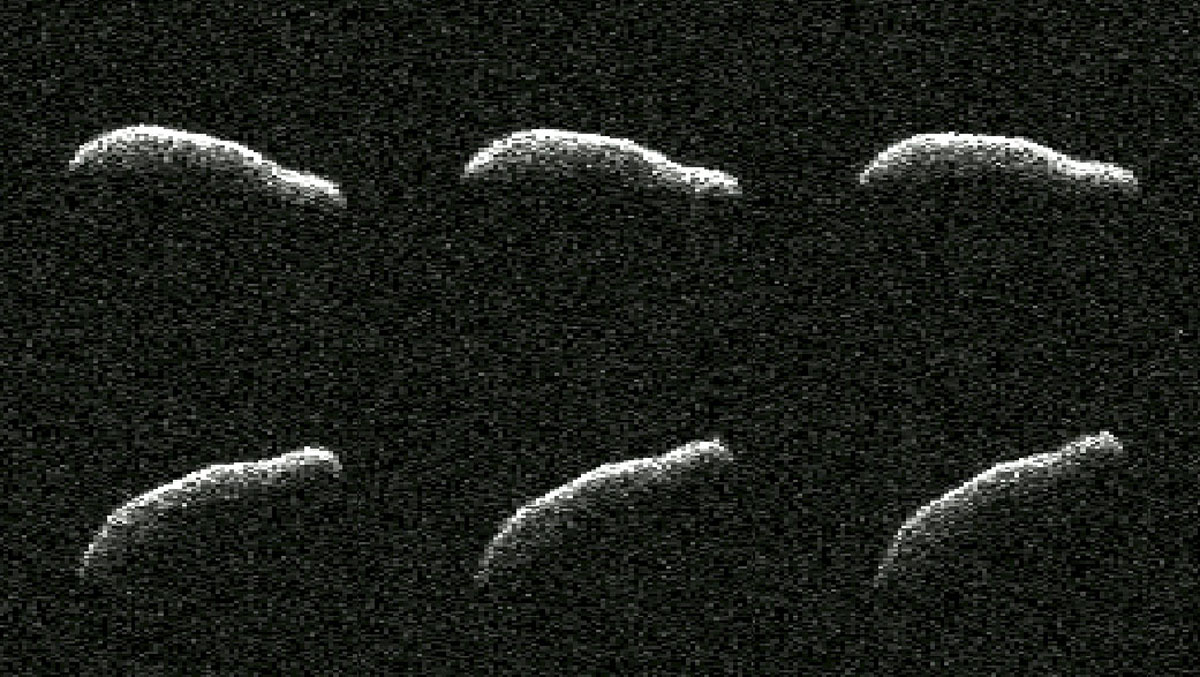
In 2011, astronomers discovered an asteroid that, they thought, had a slim chance of striking Earth in 2040. But in February 2023, that asteroid, called 2011 AG5, harmlessly jetted past Earth at a distance of 1.1 million miles (1.8 million kilometers). That's five times the distance from the Earth to the moon, for context.
But the close approach gave scientists at NASA's Jet Propulsion Laboratory (JPL) a golden opportunity to observe the asteroid up close. They measured it to be a weirdly elongated rock, approximately 1,600 feet (500 meters) long and 500 feet (150 m) wide.
"Of the 1,040 near-Earth objects observed by planetary radar to date, this is one of the most elongated we've seen," Lance Benner, a principal scientist at JPL, said in a statement.
2011 AG5 will indeed return in 2040, but astronomers now know that it will in fact miss Earth. It will take another close approach to our planet, though, falling around 670,000 miles (1.1 million kilometers) within the Earth's vicinity.
Read more here: Oddly shaped asteroid once considered an impact risk for Earth races past the planet
7. Earth has a new 'quasi-moon'

In March, astronomers using the Pan-STARRS survey telescope in Maui spotted a peculiar asteroid very close to Earth. Other observatories around the world quickly confirmed the existence of what astronomers named 2023 FW13.
Citizen scientists found that 2023 FW13 is what astronomers called a "quasi-moon." It does not orbit the Earth as our (real) moon does, but instead exists in a complex orbit that keeps it within the Earth's general vicinity. At its closest, 2023 FW13 comes within about 9 million miles (15 million kilometers) of Earth.
Quasi-moons are fleeting, but astronomers now believe that 2023 FW13 has been in Earth’s environs since 100 B.C. and will remain there until around A.D. 3700. Earth has other quasi-moons, such as Kamo'oalewa, discovered in 2016, but 2023 FW13 may be the most stable ever found.
Read more here: Earth has a new 'quasi-moon' after discovery of newfound asteroid 2023 FW13
8. Giant space cushions
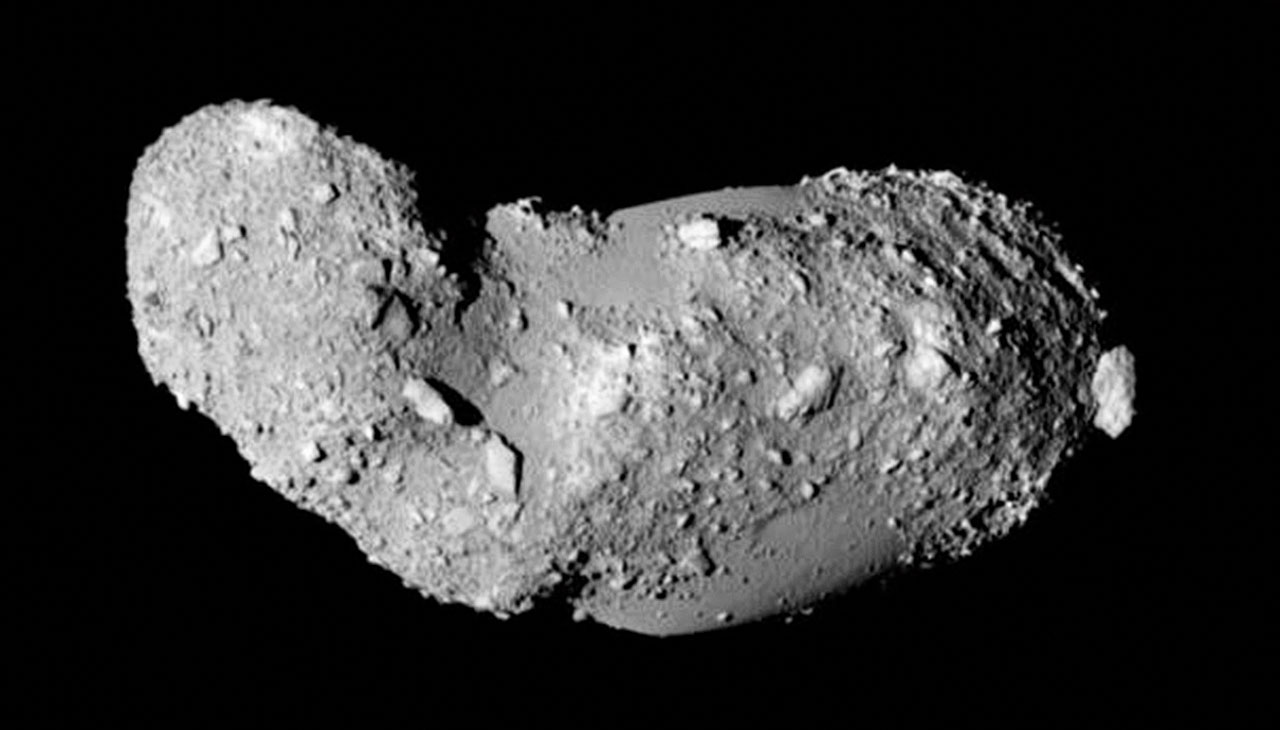
JAXA’s Hayabusa once visited Itokawa, a peanut-shaped asteroid — or, perhaps, a sea-otter-shaped asteroid — 1,640 feet (500 meters) long. Now, scientists studying samples of Itokawa that Hayabusa returned to Earth found that Itokawa is actually a "rubble-pile asteroid." It’s a collection of loose boulders and rocks clumped back together, riddled with pores and pockets within.
"In short, we found that Itokawa is like a giant space cushion, and very hard to destroy," Fred Jourdan, an astronomer at Curtin University in Australia, said in a statement.
In fact, because rubble-pile asteroids' pores make them especially resilient in the face of impacts, Itokawa is a relic of the ancient solar system: It has survived remarkably unchanged for some 4.2 billion years.
Knowing an asteroid's consistency is important for planetary defense. If we wish to redirect a hazardous asteroid by striking it with a DART-like impact, the asteroid's structure could be mark difference between a gentle push and a deadly disintegration.
Read more here: Rubble-pile asteroids are 'giant space cushions' that live forever
9. The James Webb Space Telescope had to be on this list
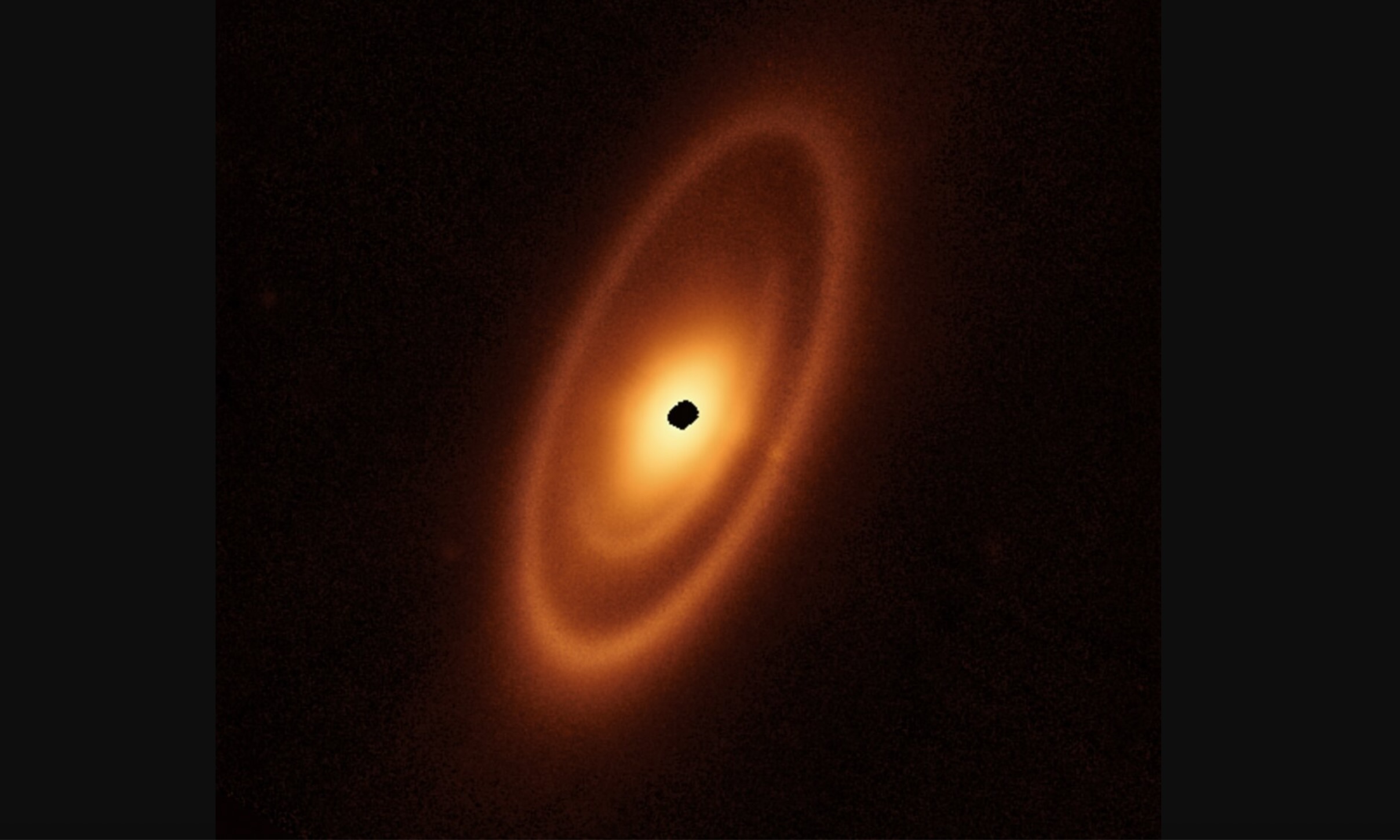
Fomalhaut is a young, hot star lying about 25 light-years away from our solar system. Since 1983, astronomers have known the stellar body was surrounded by a ring of dusty debris. But this year, when they pointed JWST in Fomalhaut's direction, they snapped an image showing that the ring actually contained three distinct rings.
Fomalhaut's nested debris rings are more complex than either our own asteroid belt or the Kuiper Belt that extends beyond Neptune. The most distant of the trio extends for 14.3 billion miles (23 million kilometers) — which is about 150 times the distance between Earth and the sun. And the distinct gaps between the rings, astronomers suggest, could be evidence of planets nestled within.
Astronomers think these rings are unlike protoplanetary disks that coalesce into planets. Rather, these rings likely formed later, after the debris from post-solar system collisions had already formed.
Read more here: James Webb Space Telescope snaps amazing photo of alien asteroid belt
10. RNA found in sample from asteroid Ryugu
In March, scientists studying rock samples of the asteroid Ryugu — brought back to Earth by JAXA's Hayabusa2 — revealed that they had found uracil, one of four nucleobases that make RNA.
Ryugu is an example of a carbon-rich asteroid type called a "CI chondrite." Astronomers had previously found three of RNA's other nucleobases — adenine, guanine and cytosine — in CI chondrites that had fallen to Earth as meteorites. But "one could not completely exclude the possibility that they were terrestrial contaminants," Yasuhiro Oba of Hokkaido University in Japan told Space.com.
Now, however, astronomers have solid evidence that an RNA base exists in material that formed before the planets because we have proof of the fourth RNA component, uracil. This suggests that the building blocks of life were present in asteroid material from the very early solar system — and that life elsewhere in the universe might contain RNA and DNA, just like life on Earth.
Read more here: Building block of life found in sample from asteroid Ryugu
11. The periodic table may extend way farther than we thought
33 Polyhymnia is an unremarkable 34 miles (55 kilometers) wide. But on the inside, this member of the asteroid belt is anything but unremarkable.
Astronomers believe Polyhymnia is denser than osmium, the densest naturally occurring element on Earth. Polyhymnia is an example of what astronomers call a compact ultra dense object (CUDO).
What makes CUDOs tick remains a mystery. But theoretical physicists have identified one possible answer: super-heavy elements with atomic numbers greater than 164, far beyond the periodic table as we know it. Those elements, their mathematics suggest, may have densities above osmium.
If the research has weight, then it invites further questions about how far, exactly, the periodic table can extend. The higher the atomic number, the less stable elements become, until you reach atoms that don't last even a fraction of a second before decaying into lighter elements. For that reason, the heaviest element we know is oganesson, number 118.
But these physicists suggest that above 164 lies an "island of stability," where elements can last long enough to leave their mark on asteroids.
Read more here: Nearby asteroid may contain elements 'beyond the periodic table', new study suggests
12. The journey to a bizarre metal asteroid

Of all the asteroids on this list, 16 Psyche's most famous days are still in the future. That is because NASA's mission of the same name, which launched on a SpaceX Falcon Heavy rocket from Kennedy Space Center on Oct. 13 this year, has barely embarked on its journey to its namesake asteroid.
Psyche isn’t like most of its neighbors in the asteroid belt. It is primarily made of metal. More specifically, scientists think it's composed of up to 95% nickel and iron. Those elements also happen to be predominant in Earth’s core, which makes astronomers wonder if Psyche isn't actually something very similar: a core of a planet that never formed.
There are other metal-rich asteroid candidates like Psyche, but Psyche is the largest and best-studied of them all. And studying it could give scientists a great amount of insight into planetary innards and how they form.
Psyche the spacecraft's voyage has barely begun. It must encounter Mars first, an encounter scheduled for 2026, before getting a gravitational boost that will carry it onward to Psyche the asteroid by 2029.
Read more here: SpaceX Falcon Heavy rocket launches NASA's Psyche probe to bizarre metal asteroid







